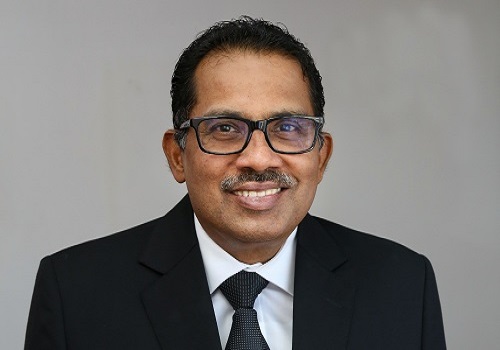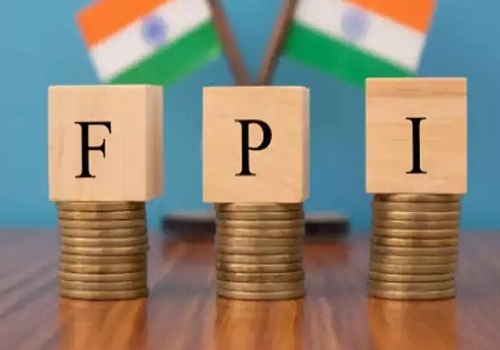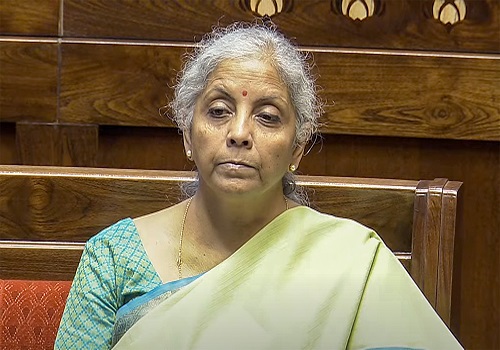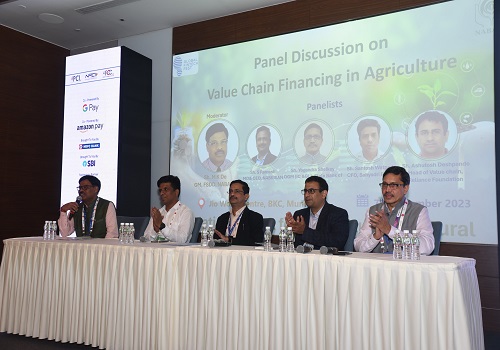Motilal Oswal AMC Unveils Results of Investor`s Survey on Passive Funds in India

A study by Motilal Oswal Asset Management Company (MOAMC) reveals that passive funds have taken centre-stage in India over the last few years, gaining market share from 1.4% of AUM in 2015 to over 17% today. MOAMC offers the widest range of passive funds in India with more than 17,000 Crs in AUM across 30 Index Funds, ETFs, and FoFs. The survey conducted with more than 2,000 investors participating from across the country, shares insights on the usage and attitude of investors towards passive funds in India. The study also throws light on investors’ preference for SIPs over lumpsum investing, an affinity for index funds, and reliance on social media over news outlets in their investment decision-making.
Key Highlights:
* 61% of respondents say they have invested in at least 1 passive fund
* The top 3 reasons for investing in passive funds turned out to be low cost, simplicity, and market returns
* 53% of respondents say they increased their allocation to passive funds in the last 12 months
* 3 in 4 respondents prefer to invest using SIPs, underscoring the importance of disciplined investing for wealth creation over the long-term
* Around 60% of respondents said that they rely on Social Media for information on markets and investments
* More than 80% of respondents say they plan to hold their investments for more than 3 years
Speaking on the study, Navin Agarwal, MD & CEO, Motilal Oswal Asset Management Company Ltd. said, “The demand for passive investing has grown exponentially over the past few years, which reflects in AUM growth of 8.5x in last 5 years at a CAGR of 54%. Our commitment to innovation and education will continue to support the future of passive funds in India.”
Pratik Oswal, Head of Passive Funds, Motilal Oswal Asset Management Company Ltd said, “Passive funds are widely popular in the U.S. and have over 50% market share. We have started seeing similar trends in India over the last few years as well. With a market share of around 17%, we believe that there is ample runway for passive funds ahead. This survey is a first of its kind in India and provides insights into how investors think about passive funds. It also helps shed some light on the thought process behind investment decisions of Indian investors.”
According to the findings of the survey, 61% of investors have invested in at least 1 passive fund, underscoring the fast-growing adoption of passive funds in India. Revealing the reason investors choose to invest in passive funds, the survey findings point out the fact that 57% of respondents prefer these funds due to their low-cost nature as the biggest reason, followed by 56% of respondents who feel that the simplicity of these funds is what pulls them to invest in them, and more than 54% investors do so for the fact that they tend to deliver market returns.
Exponential AUM Growth in Passive Funds
The mutual fund industry has seen a major shift towards Passive Funds over the last five years. At the end of FY-2018, the AUM of all passive funds put together stood at around ?83,000 crore. It has grown to more than ?7,00,000 crore as of Mar-2023, rising 8.5x in just 5 years at a CAGR of 54%.
Investor Preferences for Allocations to Passive Funds
The survey findings came out with interesting patterns in investor preferences in terms of allocation. Nearly half of those investing in passive funds allocate 10-30% of their portfolio to passive funds, reveals survey findings. About 15% of investors mentioned that they have allocated 31-50% in passive funds, while 12% said that they allocated more than 50% of their portfolio in passive funds. On the other hand, 28% of investors have a less than 10% allocation to passive funds.
Affinity For Index Funds
According to the findings of the survey, investors seem to have a preference between Index Funds & ETFs with 87% of respondents investing via Index Funds vs just 41% investing via ETFs. According to the fund house, this is because ETFs are bought and sold on the stock exchanges and require the investor to have a demat account. On the other hand, investing in Index Funds has no such requirement and is comparatively straightforward similar to any other mutual fund transaction.
Investors Prefer Sips over Lumpsums, Social Media Over News Outlets
More than 75% of respondents said that they preferred to invest regularly every month using
SIPs, while only 42% said that they leaned towards Lumpsum investment. Interestingly, the preference for SIPs was equally strong among those who invest in passive funds and those who do not. This universal preference for SIPs shows that they are simple, yet very effective in long-term wealth creation. The more disciplined approach to investing has also proven to be a great way to tide over market volatility, allowing investors to cut through the noise. As of Mar-2023, monthly SIP inflows crossed the ?14,000 crore mark for the first time, staying above the ?10,000 crore mark for 19 months straight.
The survey also reveals that more than 60% of respondents get information on markets and investments from Social Media platforms like Twitter, Instagram, etc. On the other hand, only around 26% follow traditional news/media outlets for information related to investing. There was a higher preference for social media in those that do not invest in passive funds, while the passive fund investors turned more towards newsletters and blogs online.
Long-Term Investing Gaining Traction
The investment landscape in India is evolving rapidly, more than 80% of respondents said that they were planning to hold their investments for more than 3 years, while 16% planned to hold for 1-3 years. Only 3% of investors said that they were looking to liquidate their investments in less than a year.
To Read Complete Report & Disclaimer Click Here
Above views are of the author and not of the website kindly read disclaimer






















